This day in Space History
Moderator: ArcWolf
Re: This day in Space History
The first Thanksgiving celebrated in space took place at the tail end of the first week of Skylab 4, on November 22, 1973.
It was a working holiday for commander Gerald Carr, CM pilot William Pogue and mission scientist Dr. Edward Gibson. Pogue and Gibson did a spacewalk to swap out their first film canister and repair a malfunctioning antenna. True to Thanksgiving tradition, they tore some foil away from the station to get the antenna equipment, inadvertently decorating for Christmas.
The food of Skylab was among the most true-to-form ever flown into space. The large part of the reason is because they flew a freezer aboard the space station, stocked with enough food and more for six months worth of habitation. Not even the International Space Station has that luxury. They have to reconstitute freeze-dried food, with the occasional MRE-style shelf-stable delicacy mixed in.
Each astronaut chose a different main dish. Only Gibson had turkey, while Carr had prime rib and Pogue had chicken. The crew, which would become infamous for their complaining, thought it was largely bland, but were limited on their salt intake due to medical requirements.
It was a working holiday for commander Gerald Carr, CM pilot William Pogue and mission scientist Dr. Edward Gibson. Pogue and Gibson did a spacewalk to swap out their first film canister and repair a malfunctioning antenna. True to Thanksgiving tradition, they tore some foil away from the station to get the antenna equipment, inadvertently decorating for Christmas.
The food of Skylab was among the most true-to-form ever flown into space. The large part of the reason is because they flew a freezer aboard the space station, stocked with enough food and more for six months worth of habitation. Not even the International Space Station has that luxury. They have to reconstitute freeze-dried food, with the occasional MRE-style shelf-stable delicacy mixed in.
Each astronaut chose a different main dish. Only Gibson had turkey, while Carr had prime rib and Pogue had chicken. The crew, which would become infamous for their complaining, thought it was largely bland, but were limited on their salt intake due to medical requirements.


Re: This day in Space History
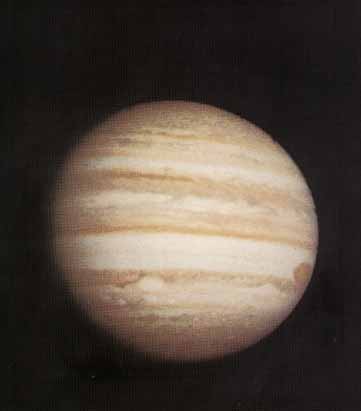
41 years ago tonight, Pioneer 10 became the first probe to reach one of the outer planets, flying within 133,000 km of the planet Jupiter.
In addition to close-up photos of the planet, one of the biggest discoveries was bands of hydrogen around the orbits of Io and Europa. It would be later that they would discover their true nature to be gigantic, highly-intense radiation belts supplied by Io's yet-to-be-discovered volcanism.
The only moon to be photographed by Pioneer 10 with any noticeable was Ganymede, and it wasn't at a very close range. Europa was largely only seen as a dot, and an image of Io was lost due to latent radiation interfering with the probe during the fly-by.

And 40 years ago today, Pioneer 11 followed around Jupiter.
Pioneer 11 came a lot closer to the planet, flying within 43,000 km of the cloud tops and closer to its polar regions. It got images of Io, but not good enough to discover its volcanism yet.


Re: This day in Space History
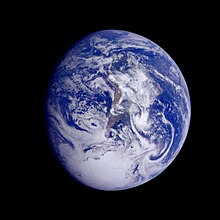
24 years ago today, Galileo made its first flyby of Earth on its way to Jupiter. Closest approach was 960 km (about 596 miles).
During the first flyby, an animatic was made of the various images taken of Earth on its approach. It was largely focused on the Southern Hemisphere due to the season on Earth.
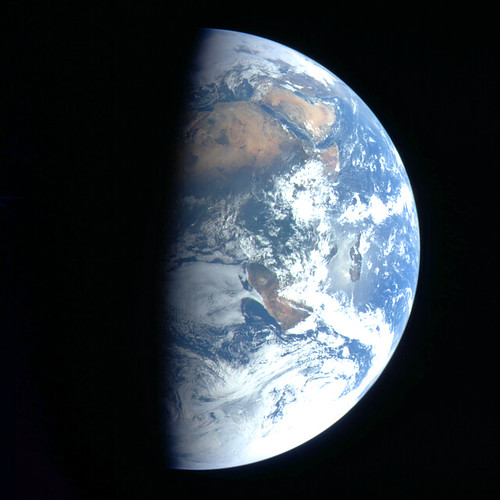
Exactly two years later, it flew by Earth again, this time at a distance of 303.1 km (about 188 miles)
During this fly-by, the Galileo Optical Experiment (GOPEX) was conducted. Galileo's camera was turned toward the night side of Earth, and intense laser pulses were sent in the spacecraft's direction. The probe was able to see the laser pulses as far as 6 million km away. The laser pulses were seen in about 30% of the images taken for the experiment.


Re: This day in Space History

36 years ago today, the Pioneer Venus Multiprobe encountered Venus.
A total of four entry probes entered the Venusian atmosphere from solar orbit and returned data from the atmosphere, relaying it via the Pioneer Venus Orbiter, which had arrived five days earlier.
None of the probes were designed to land safely. However, the Day Probe did survive impact, and continued to operate for about 68 minutes afterward before the Venusian atmosphere crushed it. The bus that carried the atmospheric probes to Venus burned up in the atmosphere at 110 km altitude.


Re: This day in Space History

49 years ago today, NASA attempted to launch the re-purposed Gemini 6A on a rendezvous mission with Gemini 7. On-board were Wally Schirra and Tom Stafford.
Gemini 6 was originally scheduled to be the first to attempt rendezvous and docking with an Agena target vehicle, with a launch date of October 25, 1965. The target vehicle, however, failed to orbit. The mission was re-purposed to instead rendezvous with Gemini 7, a two-week long-duration mission that would already be in orbit.
When ignition occured, the engines fired for less than a second before shutting down, aborting the launch. The cause was ultimately found to be a plug erroneously left in the engines.
The astronauts were stuck in the capsule for an additional two hours after launch before they could be extricated. The hypergolic fuels used in the Titan II rocket required certain safing procedures before the support crew could return to Pad 19.
A video of the abort is available here. It was the live TV feed from CBS, with Walter Cronkite reporting.


Re: This day in Space History

53 years ago today, NASA put in a contract with Boeing to construct the S-IC rocket stage, the first stage of the Saturn V rocket.
Construction would take place at the Michoud Assembly Facility in New Orleans, an annex of the Marshall Spaceflight Center.



Re: This day in Space History
35 years ago today, the Soviet Union launched Soyuz T-1 unmanned from Pad 1/5 (Gagarin's Start), Baikonur Cosmodrome. It autonomously docked with Salyut 6, which was unmanned at the time.
Soyuz T-1 would remain docked for the next three months, testing the veracity of the new Soyuz 7K-ST "Soyuz Transport" model, which brought solar panels back to Soyuz. It would also be used to boost Salyut 6's orbit for the next series of manned missions, which would begin two weeks after Soyuz T-1 departed in late March 1980.
The flight was actually the fourth of the Soyuz 7K-ST variant. It was the first to actually carry the Soyuz name. The previous three were given the generic "Kosmos" name given to many Soviet spacecraft that either (a) failed to orbit, or (b) were simply classified.
Soyuz T-1 would remain docked for the next three months, testing the veracity of the new Soyuz 7K-ST "Soyuz Transport" model, which brought solar panels back to Soyuz. It would also be used to boost Salyut 6's orbit for the next series of manned missions, which would begin two weeks after Soyuz T-1 departed in late March 1980.
The flight was actually the fourth of the Soyuz 7K-ST variant. It was the first to actually carry the Soyuz name. The previous three were given the generic "Kosmos" name given to many Soviet spacecraft that either (a) failed to orbit, or (b) were simply classified.


Re: This day in Space History

35 years ago today, NASA and Rockwell Rocketdyne finally completed the first successful full mission profile test firing of the RS-25 Space Shuttle Main Engine at the test stands of Stennis Space Center, Mississippi.
The test firing was actually a series of three different firings:
First, the Start Verification Firing, which just tested the spark starters required for all liquid hydrogen/liquid oxygen rocket engines. The engines were only ignited for 1.5 seconds.
Second, a Calibration Firing, where the engines ran for 100 seconds at 100% throttle, primarily to measure what the thrust at "100%" actually was.
Finally, the Flight Demonstration Firing, where the engines were run in a full simulated mission profile. First they were ignited and throttled up entirely. They were throttled back to 70%, about where they would be at "max Q", the point in flight where aerodynamic loads on the stack are greatest before the atmosphere begins to thin around it. Then it is throttled back up to 100% for most of the rest of the firing until about a minute before MECO, where it would gradually throttle down to 70% again to keep acceleration forces on the crew from exceeding 3 g. The entire burn was 8 minutes, 40 seconds long.
In a nominal launch profile, the engines were not burned entirely to fuel depletion. If they were, the engines would be ruined by running without fuel. Additionally, leaving some fuel in the External Tank aided its destructive re-entry about 45-60 minutes after launch depending on launch profile.
A total of 46 SSME's were produced, averaging nine mission uses each. Currently, NASA still has 16 of them, which they will exhaust over the early course of the Space Launch System program beginning in 2017 before migrating to different engines.


Re: This day in Space History

53 years ago today, NASA formally contracted with Douglas Aircraft Company to construct the S-IVB rocket stage.
Unlike the previous S-IV, which used a cluster of six Pratt & Whitney RL-10 engines designed for the Centaur upper stage, the S-IVB would use a single Rocketdyne J-2 engine.
Two classes of S-IVB were created. The 200 series would have a straight skirt in order to top the Saturn IB rocket. The 500 series would have a flared skirt in order to top the Saturn V rocket.
A total of 31 S-IVB's were produced; 15 of the 200 series and 16 of the 500 series. Seven of them are on display in various places and situations (including the backup Skylab). Twelve re-entered Earth's atmosphere (including the one turned into Skylab), with four largely surviving to oceanic impact, and one re-entering in pieces. Five are in heliocentric orbit, and five hit the Moon. One was destroyed in testing on the ground.
One, "S-IVB-F", designed specifically to test fitting for facilities, is currently unaccounted for.


Re: This day in Space History

46 years ago today, NASA launched Apollo 8 on a Saturn V rocket from Pad 39A, Kennedy Space Center.
The S-IC first stage underperformed fractionally. The computer compensated by firing an additional 2.45 seconds. The S-II second stage engines experienced minor pogo oscillations (vertical harmonic vibrations), but they were manageable.
Late in its second orbit, the command for trans-lunar injection (TLI) was given, something not attempted yet with the S-IVB third stage. The 5:09 minute burn went perfectly. 5 hours after separating from the CSM, the S-IVB vented its remaining fuel, giving it enough momentum to swing by the Moon on the opposite side of Apollo 8 and enter a heliocentric orbit inside that of Earth.
Passing through the Van Allen radiation belts gave the crew a radiation dosage equivalent to a chest X-ray, determining that transit through it was safe.
A mid-course correction 11 hours after launch increased its speed by about 7.3 m/s.

This is the first image ever taken by humans of the whole Earth. It was taken from a distance of about 30,000 km by LM pilot Bill Anders. As you can see, the image is upside down, with South America prominent.


Re: This day in Space History
46 years ago today, the crew of Apollo 8 entered orbit around the Moon.
During the ninth and penultimate orbit, during a live prime-time TV broadcast, they commemorated Christmas Eve by reading the first ten verses of the Book of Genesis.
"I hope all of you back down on Earth can see what we mean when we say it's a rather foreboding horizon; a very rather dark and unappetizing looking place.
We are now going over...approaching one of our future landing sites selected in this region, called the Sea of Tranquility. Smooth in order to make it easy for the initial landing attempts, in order to preclude the having to dodge mountains.
Now you can see the long shadows of the lunar sunrise. We are now approaching lunar sunrise, and for all the people back on Earth, the crew of Apollo 8 has a message that we would like to send to you.
'In the beginning God created the heaven and the earth.
‘And the earth was without form, and void; and darkness was upon the face of the deep.
‘And the Spirit of God moved upon the face of the waters. And God said, Let there be light: and there was light.
‘And God saw the light, that it was good: and God divided the light from the darkness.'"
"‘And God called the light Day, and the darkness he called Night. And the evening and the morning were the first day.
‘And God said, Let there be a firmament in the midst of the waters, and let it divide the waters from the waters.
‘And God made the firmament, and divided the waters which were under the firmament from the waters which were above the firmament: and it was so.
‘And God called the firmament Heaven. And the evening and the morning were the second day.’"
"'And God said, Let the waters under the heaven be gathered together unto one place, and let the dry land appear: and it was so.
‘And God called the dry land Earth; and the gathering together of the waters called he Seas: and God saw that it was good.'
And from the crew of Apollo 8, we close with good night, good luck, a Merry Christmas – and God bless all of you, all of you on the good Earth."
During the ninth and penultimate orbit, during a live prime-time TV broadcast, they commemorated Christmas Eve by reading the first ten verses of the Book of Genesis.
"I hope all of you back down on Earth can see what we mean when we say it's a rather foreboding horizon; a very rather dark and unappetizing looking place.
We are now going over...approaching one of our future landing sites selected in this region, called the Sea of Tranquility. Smooth in order to make it easy for the initial landing attempts, in order to preclude the having to dodge mountains.
Now you can see the long shadows of the lunar sunrise. We are now approaching lunar sunrise, and for all the people back on Earth, the crew of Apollo 8 has a message that we would like to send to you.
'In the beginning God created the heaven and the earth.
‘And the earth was without form, and void; and darkness was upon the face of the deep.
‘And the Spirit of God moved upon the face of the waters. And God said, Let there be light: and there was light.
‘And God saw the light, that it was good: and God divided the light from the darkness.'"
"‘And God called the light Day, and the darkness he called Night. And the evening and the morning were the first day.
‘And God said, Let there be a firmament in the midst of the waters, and let it divide the waters from the waters.
‘And God made the firmament, and divided the waters which were under the firmament from the waters which were above the firmament: and it was so.
‘And God called the firmament Heaven. And the evening and the morning were the second day.’"
"'And God said, Let the waters under the heaven be gathered together unto one place, and let the dry land appear: and it was so.
‘And God called the dry land Earth; and the gathering together of the waters called he Seas: and God saw that it was good.'
And from the crew of Apollo 8, we close with good night, good luck, a Merry Christmas – and God bless all of you, all of you on the good Earth."


Re: This day in Space History

46 years ago today, the Apollo 8 CM splashed down in the Pacific Ocean, approximately 1,000 miles SW of Honolulu, just north of the Line Islands (present-day Kiribati).
Splashdown occurred as planned about an hour before sunrise. The CM settled upside-down, a predicted possible equilibrium position, in rough seas, causing commander Frank Borman to get seasick. They were recovered shortly after sunrise by assets led by the aircraft carrier USS Yorktown in otherwise good health.


Re: This day in Space History



11 years ago today, the Spirit rover landed on Mars in Gusev crater, roughly half-way around the planet from Vallis Marineris, about 2,200 miles SW of Olympus Mons. The landing would ultimately represent the beginning of the long-term exploration of the surface of Mars.

As the first images came from Spirit, a range of hills was identified to the rover's east and southeast. As such, the landing site was named Columbia Memorial Station, and the seven hills were named after the astronauts killed in the Columbia disaster. The rover would summit Husband Hill and McCool Hill during the mission.
Spirit would operate for the next six years, ultimately driving 4.8 miles. It would get stuck toward the end of its life, resulting in dust covering its solar panels. Unable to move into positions to allow the wind to clean the dust off, it ultimately failed, with last contact on March 22, 2010, after 2,210 Martian days (roughly 3.3 Martian years) on the surface.


Re: This day in Space History
55 years ago today, NASA and the Redstone Arsenal began the study to lead the U.S. to a "large booster" capability, something with more than 1 million lbs of force (lb-f) for the first stage at launch.
The committee would look at the Juno V, a rocket that was planned out of the "Super Jupiter" project. It would eventually evolve into the Saturn I.

The committee would look at the Juno V, a rocket that was planned out of the "Super Jupiter" project. It would eventually evolve into the Saturn I.



Re: This day in Space History

50 years ago today, Gemini 2 was finally launched from Pad 19, Cape Kennedy, after a series of delays.
It was originally set to launch in August 1964, but was delayed by a series of hurricanes, the first of which was Hurricane Cleo. A launch attempt in December 1964 was aborted at ignition due to a detected malfunction in the first stage engines' hydraulics system.
It was a suborbital flight to test the heat shield. It reached an apogee of 105 miles, and splashed down in the Atlantic about 2,100 miles downrange, about 800 miles east of the Lesser Antilles.
The Gemini 2 capsule would also become the first spacecraft to be flown into space a second time. It was used on a mock-up of the Manned Orbiting Laboratory for a test flight on November 3, 1966. While the space station mock-up made it to orbit, the capsule was released before that and again splashed down in the Atlantic, this time over 5,000 miles downrange near Ascension Island.
The capsule is now located at the Air Force Space and Missile Museum in Cape Canaveral.


Re: This day in Space History
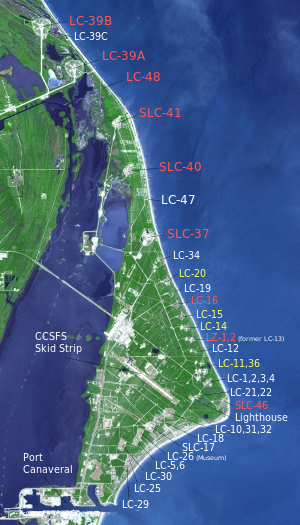
Cape Canaveral's development was aborted by the Great Depression, of which the crash in land value in Florida was a factor.
In 1948, the Air Force received Cape Canaveral, which at the time was a deactivated base used by the Navy during World War II. Initially referred to as the Joint Long Range Proving Ground, to provide a coastal range for the testing of ballistic missiles, it took the name Patrick Air Force Base in honor of Army Maj. Gen. Mason Patrick, one of the earliest commanders of what was then the Army Air Corps.
The first rocket launch from Cape Canaveral, a Bumper rocket (V-2 first stage, Corporal cruise missile second stage), took place from Pad 3 on July 24, 1950. The first American orbital flight, launching the probe Explorer 1 on a Juno I rocket, took place on January 31, 1958, from Pad 26.
Notable pads:
* Pad 5, home of Mercury-Redstone. First manned spaceflight, Freedom 7, launched from there on May 5, 1961.
* Pad 14, home of early Atlas rockets. All four orbital Mercury flights launched from here (first one, Friendship 7, on February 20, 1962), as well as all the Agena target vehicles for the Gemini program, and early interplanetary flights to the Moon, Venus and Mars.
* Pad 17, home of the Thor rocket and its successors, the Delta and Delta II rockets. Launched all sorts of payloads, including both MER rovers to Mars.
* Pad 19, home of Gemini launches with the Titan II rocket.
* Pad 31. Originally used to test the Minuteman ballistic missile, it is used today to store the remains of Space Shuttle Challenger.
* Pad 34, home of the Saturn I and Saturn IB rocket. Launched Apollo 7. Also the site of the Apollo 1 fire, and today stands as a memorial to it.
* Pad 36, home of the Atlas-Centaur rocket and its immediate successors, the Atlas I, Atlas II and Atlas III. Site of the launch of the first probe launched to leave the Solar System, Pioneer 10 (launched 1972).
* Pad 37, another home of the Saturn I, today used for the Delta IV rocket. Primarily used for military launches, but launched the first test flight of the Orion spacecraft late last year.
* Pads 40 and 41, originally home of the massive Titan III and Titan IV rockets. Pad 41 has hosted the launches of three of the five probes currently on their way out of the Solar System; both Voyager probes on Titan IIIE-Centaur rockets (1977), and New Horizons on an Atlas V rocket (2006).
** Pad 41 is today used for the Atlas V rocket, NASA's current workhorse rocket.
** Pad 40 is used for the commercial Falcon 9 rocket by SpaceX, which launches cargo to the ISS via the Dragon capsule.
A total of 35 different launch sites have been used up and down Cape Canaveral, not including Launch Complex 39, which was developed as part of NASA property carved from what became Cape Canaveral Air Force Station in 1960. That site was originally named the Launch Operations Center.
One week after the assassination of President John F. Kennedy, an early champion of the American space program, Cape Canaveral's name was changed to Cape Kennedy in his honor. The Air Force changed their facility's name, and NASA did as well.
The city of Cape Canaveral, located on the southern end of the geographic feature, did not. They did not appreciate such a wide-ranging wholesale change to a feature named such for 400 years prior. The state of Florida used a law to revert the name in 1973, and the federal government fell in line. Only Kennedy Space Center retained its name.


Re: This day in Space History
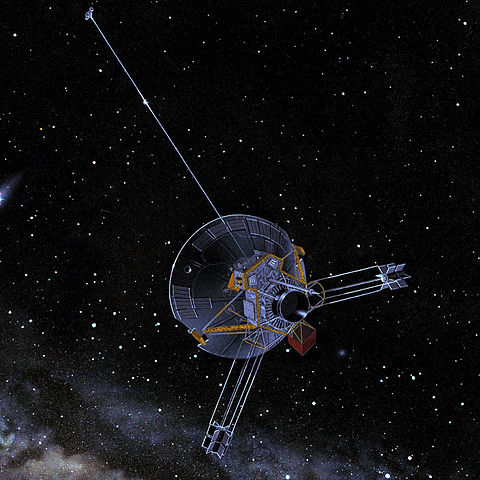
12 years ago today, Earth received a transmission from Pioneer 10 for the last time.
Active communication had ended in 1997, but they continued to use tracking of its signal as a training exercise for Deep Space Network trainees, and for experiments in chaos theory. Attempts to contact the probe continued until 2006, the point by which ground controllers estimated it would no longer have its antenna pointed at Earth due to the depletion of its reaction control fuel.
Pioneer 10 is headed in the general direction of the star Aldebaran, in the constellation Taurus. It will fly by the star in about 2 million years, depending on its course in relation to the Sun.
********
I should probably note that next week and next weekend are going to be a serious downer. It is by terrible happenstance that all three major spaceflight-related disasters that have befallen NASA occurred within a week of each other on the calendar: The Apollo 1 fire, the Challenger disaster, and the Columbia disaster.


Re: This day in Space History
I warned you this week was going to suck.
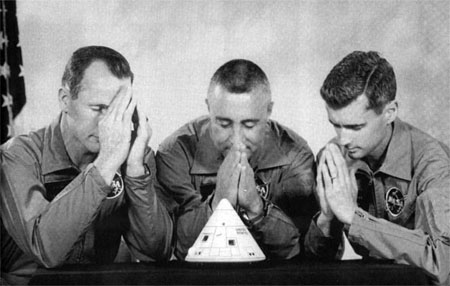
A lot of the blame for the fire that killed the crew of Apollo 1, which happened 48 years ago today, ultimately fell on the manufacturer, North American Aviation (later Rockwell, now part of Boeing).
The above photograph, taken after an August 19, 1966, crew tour of the facilities where the Apollo Block I CSM (command and service module) was being constructed, was intended to be a partial parody. Astronauts Ed White, Gus Grissom and Roger Chaffee (as pictured) are praying to God before a model of the Apollo command module.
The "Joe" they were referring to was Joseph Shea, manager of the Apollo Spacecraft Project Office. Shea ordered North American to remove any flammable material from the spacecraft. North American either ignored him, or complied, only to reverse the removal before spacecraft delivery a week later.
Sure enough, on January 27, 1967, during their on-pad "plugs-out" operational test at Pad 34, Cape Kennedy, a short circuit caused an intense fire in the command module. It took 5 minutes just to get back into the command module. By then, the astronauts were long since dead, burns over 25-50% of their bodies, and suffocated when the fire consumed all the oxygen in the spacecraft.
The fire melted their spacesuits to the seats. It took over 90 minutes just to remove their bodies. But at least after this disaster, they had entire remains to return to their families. The Challenger and Columbia astronauts would not be so lucky.
People in charge at NA were fired, and Apollo was redesigned. The most important change: replace the original pure oxygen atmosphere with a more natural N/O atmosphere. Joseph Shea was distraught that such a tragedy occurred under his watch, and he was ultimately re-assigned within NASA.
The sad part is that a similar test in 1961 in the Soviet Union killed a cosmonaut, but it wasn't revealed until 1986 as part of glasnost. Some believe if it were disclosed when it happened, this could've been avoided. But the Soviet Union was not interested in disclosing any of its failures at the time.
Grissom and Chaffee were buried at Arlington National Cemetery. Although he was also eligible for Arlington, Ed White's family chose to inter him at West Point. In addition to their names on the Space Mirror Memorial at Kennedy Space Center Visitor Complex, there is a monument of three concrete benches assembled at Pad 34 (it was built by a classmate of one of theirs, and assembled in 2005), which can be reached through a tour out of Kennedy Space Center Visitor Complex.
The command module, CM-012, is in a secured location at Langley Research Center in Virginia, and has never been exhibited publicly. Grissom's family has suggested it be permanently entombed at Pad 34. The Saturn IB rocket it was on was ultimately used for Apollo 5, an unmanned test of the lunar module.
Pad 34 would be used for the launch of Apollo 7 before being retired. Apollo 7 was the last manned flight launched from what is now Cape Canaveral Air Force Station.

A lot of the blame for the fire that killed the crew of Apollo 1, which happened 48 years ago today, ultimately fell on the manufacturer, North American Aviation (later Rockwell, now part of Boeing).
The above photograph, taken after an August 19, 1966, crew tour of the facilities where the Apollo Block I CSM (command and service module) was being constructed, was intended to be a partial parody. Astronauts Ed White, Gus Grissom and Roger Chaffee (as pictured) are praying to God before a model of the Apollo command module.
They had concerns over the amount of flammable materials that would be in the high-pressure pure oxygen atmosphere of the command module. They were proposing flying in pure oxygen with an atmospheric pressure of 16 psi (about 1,100 hPa). Not only was it higher than normal atmospheric pressure, but it was over 5 times the normal partial pressure of oxygen at sea level.It isn't that we don't trust you, Joe, but this time we've decided to go over your head.
The "Joe" they were referring to was Joseph Shea, manager of the Apollo Spacecraft Project Office. Shea ordered North American to remove any flammable material from the spacecraft. North American either ignored him, or complied, only to reverse the removal before spacecraft delivery a week later.
Sure enough, on January 27, 1967, during their on-pad "plugs-out" operational test at Pad 34, Cape Kennedy, a short circuit caused an intense fire in the command module. It took 5 minutes just to get back into the command module. By then, the astronauts were long since dead, burns over 25-50% of their bodies, and suffocated when the fire consumed all the oxygen in the spacecraft.
The fire melted their spacesuits to the seats. It took over 90 minutes just to remove their bodies. But at least after this disaster, they had entire remains to return to their families. The Challenger and Columbia astronauts would not be so lucky.
People in charge at NA were fired, and Apollo was redesigned. The most important change: replace the original pure oxygen atmosphere with a more natural N/O atmosphere. Joseph Shea was distraught that such a tragedy occurred under his watch, and he was ultimately re-assigned within NASA.
The sad part is that a similar test in 1961 in the Soviet Union killed a cosmonaut, but it wasn't revealed until 1986 as part of glasnost. Some believe if it were disclosed when it happened, this could've been avoided. But the Soviet Union was not interested in disclosing any of its failures at the time.
Grissom and Chaffee were buried at Arlington National Cemetery. Although he was also eligible for Arlington, Ed White's family chose to inter him at West Point. In addition to their names on the Space Mirror Memorial at Kennedy Space Center Visitor Complex, there is a monument of three concrete benches assembled at Pad 34 (it was built by a classmate of one of theirs, and assembled in 2005), which can be reached through a tour out of Kennedy Space Center Visitor Complex.
The command module, CM-012, is in a secured location at Langley Research Center in Virginia, and has never been exhibited publicly. Grissom's family has suggested it be permanently entombed at Pad 34. The Saturn IB rocket it was on was ultimately used for Apollo 5, an unmanned test of the lunar module.
Pad 34 would be used for the launch of Apollo 7 before being retired. Apollo 7 was the last manned flight launched from what is now Cape Canaveral Air Force Station.


Re: This day in Space History
29 years ago today, Space Shuttle Challenger was blown apart 73 seconds into launch, killing seven astronauts.

This time, NASA had nobody to blame but themselves. They ignored a red-line issue and launched despite there having been a hard freeze that morning, with ice covering the launch pad. The low that morning on the coast was 26 °F, still a record for that day at Merritt Island. It loosened one of the segment joints in one of the solid rocket boosters, causing plasma exhaust from the lit fuel to breach the now-brittle O-ring gasket and cut into the external tank like a blowtorch.
Technically, although usually characterized as such, the orbiter itself did not explode. Only the external tank exploded. The orbiter was pulled out of its normal attitude at high speed, causing it to break apart under aerodynamic pressure. The SRBs themselves remained intact, and had to be blown up by range safety officers.
There is evidence the astronauts actually survived the breakup itself, but they had no pressure suits, so they would've rapidly lost consciousness if the crew compartment lost pressurization. Some believe there's a chance they could've survived until the impact of the crew compartment in the Atlantic. There is evidence they at least attempted to activate their emergency auxiliary oxygen systems.
Anybody who was born in the 1970s through 1980 was traumatized by this. Virtually every school in America was watching live since the mission was launching a teacher, S. Christa McAuliffe, as part of NASA's Teacher in Space Project. Although the program was ended in 1990, her backup, Barbara Morgan, would eventually fly to the International Space Station in 2007.
Occasionally wreckage from the shuttle still washes ashore on the Space Coast. Possession of it is illegal, and if found, NASA should be called immediately. What was recovered of Challenger is entombed at Launch Complex 31, Cape Canaveral Air Force Station.
Identified remains of the astronauts were returned to their families. What they couldn't identify was buried under the memorial for them at Arlington National Cemetery. Three of the astronauts—commander Dick Scobee, pilot Michael Smith, and mission specialist Judy Resnik—were buried there in individual graves as well. Ellison Onizuka was buried at the National Memorial Cemetery of the Pacific in Honolulu.
The Shuttle program was shelved for 32 months. Modifications were made to the SRBs to make them more resistant to this kind of issue, and future Shuttle astronauts were required to wear pressure suits during launch and re-entry from that moment on.
The accident occurred on the day President Ronald Reagan was supposed to give the State of the Union address. Although initially the plan was to go ahead with it, he decided to postpone it one week and instead address the country himself that evening. The resulting address is widely considered among the greatest American speeches of the 20th century.

This time, NASA had nobody to blame but themselves. They ignored a red-line issue and launched despite there having been a hard freeze that morning, with ice covering the launch pad. The low that morning on the coast was 26 °F, still a record for that day at Merritt Island. It loosened one of the segment joints in one of the solid rocket boosters, causing plasma exhaust from the lit fuel to breach the now-brittle O-ring gasket and cut into the external tank like a blowtorch.
Technically, although usually characterized as such, the orbiter itself did not explode. Only the external tank exploded. The orbiter was pulled out of its normal attitude at high speed, causing it to break apart under aerodynamic pressure. The SRBs themselves remained intact, and had to be blown up by range safety officers.
There is evidence the astronauts actually survived the breakup itself, but they had no pressure suits, so they would've rapidly lost consciousness if the crew compartment lost pressurization. Some believe there's a chance they could've survived until the impact of the crew compartment in the Atlantic. There is evidence they at least attempted to activate their emergency auxiliary oxygen systems.
Anybody who was born in the 1970s through 1980 was traumatized by this. Virtually every school in America was watching live since the mission was launching a teacher, S. Christa McAuliffe, as part of NASA's Teacher in Space Project. Although the program was ended in 1990, her backup, Barbara Morgan, would eventually fly to the International Space Station in 2007.
Occasionally wreckage from the shuttle still washes ashore on the Space Coast. Possession of it is illegal, and if found, NASA should be called immediately. What was recovered of Challenger is entombed at Launch Complex 31, Cape Canaveral Air Force Station.
Identified remains of the astronauts were returned to their families. What they couldn't identify was buried under the memorial for them at Arlington National Cemetery. Three of the astronauts—commander Dick Scobee, pilot Michael Smith, and mission specialist Judy Resnik—were buried there in individual graves as well. Ellison Onizuka was buried at the National Memorial Cemetery of the Pacific in Honolulu.
The Shuttle program was shelved for 32 months. Modifications were made to the SRBs to make them more resistant to this kind of issue, and future Shuttle astronauts were required to wear pressure suits during launch and re-entry from that moment on.
The accident occurred on the day President Ronald Reagan was supposed to give the State of the Union address. Although initially the plan was to go ahead with it, he decided to postpone it one week and instead address the country himself that evening. The resulting address is widely considered among the greatest American speeches of the 20th century.
The quoted lines at the end were quoted from the poem "High Flight" by John Magee, a Canadian-American poet who served in the Royal Canadian Air Force in World War II, and died in a flight accident in the UK in 1941.Ladies and Gentlemen, I'd planned to speak to you tonight to report on the state of the Union, but the events of earlier today have led me to change those plans. Today is a day for mourning and remembering. Nancy and I are pained to the core by the tragedy of the shuttle Challenger. We know we share this pain with all of the people of our country. This is truly a national loss.
Nineteen years ago, almost to the day, [[w:Apollo 1#Accident|we lost three astronauts in a terrible accident on the ground]]. But we've never lost an astronaut in flight; we've never had a tragedy like this. And perhaps we've forgotten the courage it took for the crew of the shuttle. But they, the Challenger Seven, were aware of the dangers, overcame them and did their jobs brilliantly. We mourn seven heroes: Michael Smith, Dick Scobee, Judith Resnik, Ronald McNair, Ellison Onizuka, Gregory Jarvis, and Christa McAuliffe. We mourn their loss as a nation together.
For the families of the seven: we cannot bear, as you do, the full impact of this tragedy. But we feel the loss, and we're thinking about you so very much. Your loved ones were daring and brave, and they had that special grace, that special spirit that says, "Give me a challenge, and I'll meet it with joy." They had a hunger to explore the universe and discover its truths. They wished to serve, and they did. They served all of us. We've grown used to wonders in this century. It's hard to dazzle us. But for 25 years the United States space program has been doing just that. We've grown used to the idea of space, and perhaps we forget that we've only just begun. We're still pioneers. They, the members of the Challenger crew, were pioneers.
And I want to say something to the schoolchildren of America who were watching the live coverage of the shuttle's takeoff. I know it is hard to understand, but sometimes painful things like this happen. It's all part of the process of exploration and discovery. It's all part of taking a chance and expanding man's horizons. The future doesn't belong to the fainthearted; it belongs to the brave. The Challenger crew was pulling us into the future, and we'll continue to follow them.
I've always had great faith in and respect for our space program, and what happened today does nothing to diminish it. We don't hide our space program. We don't keep secrets and cover things up. We do it all up front and in public. That's the way freedom is, and we wouldn't change it for a minute. We'll continue our quest in space. There will be more shuttle flights and more shuttle crews and, yes, more volunteers, more civilians, more teachers in space. Nothing ends here; our hopes and our journeys continue. I want to add that I wish I could talk to every man and woman who works for NASA or who worked on this mission and tell them: "Your dedication and professionalism have moved and impressed us for decades. And we know of your anguish. We share it."
There's a coincidence today. On this day 390 years ago, the great explorer Sir Francis Drake died aboard ship off the coast of Panama. In his lifetime the great frontiers were the oceans, and an historian later said, "He lived by the sea, died on it, and was buried in it." Well today we can say of the Challenger crew: Their dedication was, like Drake's, complete.
The crew of the space shuttle Challenger honored us by the manner in which they lived their lives. We will never forget them, nor the last time we saw them, this morning, as they prepared for their journey and waved goodbye and "slipped the surly bonds of earth" to "touch the face of God."


Re: This day in Space History

Twelve years ago today, the space shuttle Columbia burned up upon re-entry. Damage to the leading edge of one of the wings caused by shed insulation from the external tank during launch doomed the orbiter.
In the resulting investigation, the independent panel made the decision that the Space Shuttle program should've never been regarded as "operational" by its very nature. Flights separate from the ISS were banned; only a final mission to the Hubble Space Telescope was authorized beyond the scope of constructing the ISS.
Mission specialists Michael Anderson, David Brown and Laurel Clark were buried at Arlington. Commander Rick Husband, Pilot Willie McCool and payload specialist Ilan Ramon were given private burials. Kalpana Chawla was cremated.
Memorials for them are everywhere, and the area where the Spirit rover explored Mars was renamed the Columbia Hills, with each of seven nearby hills receiving an astronaut's name. The exploration of Husband Hill would be a large part of that mission.
From that moment until the Space Shuttle program ended, the twin sonic booms became more a comfort than anything else.


Re: This day in Space History
24 years ago today, the Salyut 7 space station re-entered the atmosphere and burned up.
By now, the Soviet Union was already experienced in the controlled destruction of their space stations at the end of their missions. There was just one problem with Salyut 7, however: the module that was intended to de-orbit it, Kosmos 1686, ran out of fuel before it could execute the burn.
Similar to Skylab in the 1970s, it was hoped it could survive long enough to be potentially retrieved by the Soviet space shuttle. But just like Skylab (which I will get to later), it fell victim to unexpectedly high solar activity at the solar maximum, hastening its demise.
It burned up over the South Pacific, with surviving debris impacting Argentina, particularly around the major city of Capitan Bermudez, about 180 miles NW of Buenos Aires. Re-entry just a couple minutes later could've resulted in impacts around the hyper-populated coastal settlements of Brazil.

Needless to say, some of it was found. This is from a Spanish-language space blog, Prensa Espacial.
Eleven missions visited Salyut 7, and the addition of a couple successive Almaz military modules tested the idea of the modular space station, an idea which would result directly in the Mir space station. The final mission, Soyuz T-15 in 1986, would transfer equipment from Salyut 7 to Mir. It would then sit derelict for about 4 1/2 years.
By now, the Soviet Union was already experienced in the controlled destruction of their space stations at the end of their missions. There was just one problem with Salyut 7, however: the module that was intended to de-orbit it, Kosmos 1686, ran out of fuel before it could execute the burn.
Similar to Skylab in the 1970s, it was hoped it could survive long enough to be potentially retrieved by the Soviet space shuttle. But just like Skylab (which I will get to later), it fell victim to unexpectedly high solar activity at the solar maximum, hastening its demise.
It burned up over the South Pacific, with surviving debris impacting Argentina, particularly around the major city of Capitan Bermudez, about 180 miles NW of Buenos Aires. Re-entry just a couple minutes later could've resulted in impacts around the hyper-populated coastal settlements of Brazil.

Needless to say, some of it was found. This is from a Spanish-language space blog, Prensa Espacial.
Eleven missions visited Salyut 7, and the addition of a couple successive Almaz military modules tested the idea of the modular space station, an idea which would result directly in the Mir space station. The final mission, Soyuz T-15 in 1986, would transfer equipment from Salyut 7 to Mir. It would then sit derelict for about 4 1/2 years.


Re: This day in Space History
48 years ago today, the Soviet Union launches Kosmos 140, the final unmanned test flight of the Soyuz 7K-OK spacecraft before its first scheduled manned flights.
To simply say it did not go well would be a massive understatement.
It suffered severe control deficiencies. A pressure equalization valve was jarred open on spacecraft separation after retrofire, causing the command module to de-pressurize. And the heat shield burned through, putting a 1-ft.-wide hole in the bottom of the capsule.
On top of all that, its parachute got tangled on deployment, and the capsule crash-landed in the ice-covered Aral Sea. (You know, that body of water in Kazakhstan that doesn't exist anymore?) It went through the ice and sank.
Several of the issues would repeat themselves in the future, directly leading to the deaths of four cosmonauts on two different manned missions. But those in charge said men could've dealt with what happened, and pressed on with Soyuz 1.
To simply say it did not go well would be a massive understatement.
It suffered severe control deficiencies. A pressure equalization valve was jarred open on spacecraft separation after retrofire, causing the command module to de-pressurize. And the heat shield burned through, putting a 1-ft.-wide hole in the bottom of the capsule.
On top of all that, its parachute got tangled on deployment, and the capsule crash-landed in the ice-covered Aral Sea. (You know, that body of water in Kazakhstan that doesn't exist anymore?) It went through the ice and sank.
Several of the issues would repeat themselves in the future, directly leading to the deaths of four cosmonauts on two different manned missions. But those in charge said men could've dealt with what happened, and pressed on with Soyuz 1.


Re: This day in Space History

31 years ago today, one of the most unique and daring extravehicular activities ever undertaken occurred during STS-41-B from Challenger.
In this EVA, astronauts Bruce McCandless and Robert Stewart tested a new utility: the Manned Maneuvering Unit (MMU). It was, essentially, a jet pack for individual on-orbit use.
McCandless tested it first, becoming the first astronaut to fly free of his spacecraft. He took the MMU out a maximum of 100 metres from the shuttle. The MMU had enough nitrogen fuel for 80 ft/sec of delta-v.
In a second EVA a few days later, Stewart went out in the MMU, and he and McCandless practice methods for the Shuttle program's first satellite repair mission. STS-41-C was scheduled to retrieve, repair, and re-deploy the Solar Maximum Mission satellite.


Re: This day in Space History
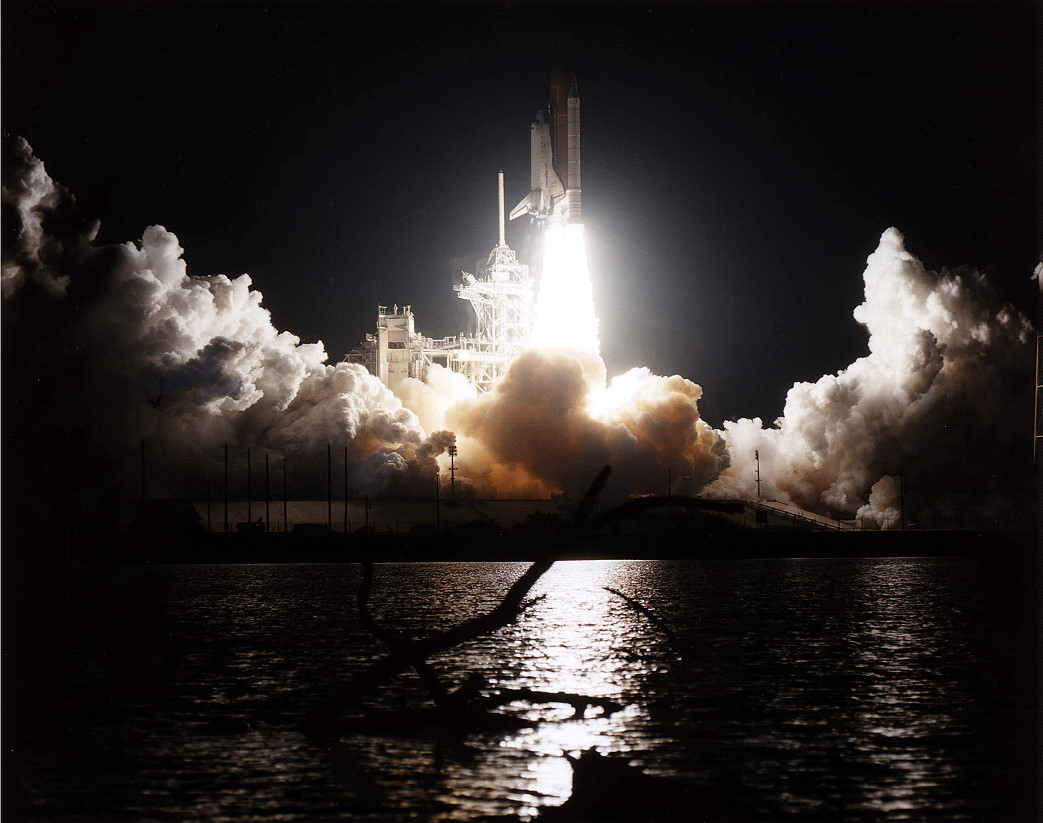
19 years ago today, Discovery was launched on STS-82, the second Hubble Space Telescope servicing mission, from Pad 39A, Kennedy Space Center.
As part of the refurbishment, the Faint Object Spectrograph was replaced by the Space Telescope Imaging Spectrograph, and the Goddard High Resolution Spectrograph was replaced by the Near Infrared Camera and Multi-Object Spectrometer. Both contained their own dedicated corrective optics which did not require COSTAR.
NICMOS contained a special heatsink of solid nitrogen for the near-infrared camera portion of the apparatus, which was expected to last 4.5 years. However, it expanded at an unpredicted rate, coming in contact with other equipment, and cutting its actual useful life in half.
The upgrades, which also included new solar array drive controls, other upgraded computer equipment, and new thermal blankets, took a total of five spacewalks to complete. At the end of the mission, the telescope was boosted to a roughly 600km orbit, its highest altitude since its initial deployment.


Re: This day in Space History
52 years ago today, NASA contracted Marion Power Shovel to construct what is now a very familiar piece of machinery: the crawler-transporter.

Two were made. Each one is 6 million pounds. Each one has two V16 diesel engines for driving, two dedicated engines for jacking and steering, and 16 transmission motors.
They have a top speed of 1 mph when carrying a Saturn V or Space Shuttle stack, and 2 mph unloaded.
In the 1990s, KSC nicknamed them "Hans" and "Franz".
Starting in 2012, NASA began refurbishing one of the Crawlers in preparation for use on the Space Launch System. Its capacity will be increased from 5.4 million pounds to 8.2 million pounds.

Two were made. Each one is 6 million pounds. Each one has two V16 diesel engines for driving, two dedicated engines for jacking and steering, and 16 transmission motors.
They have a top speed of 1 mph when carrying a Saturn V or Space Shuttle stack, and 2 mph unloaded.
In the 1990s, KSC nicknamed them "Hans" and "Franz".
Starting in 2012, NASA began refurbishing one of the Crawlers in preparation for use on the Space Launch System. Its capacity will be increased from 5.4 million pounds to 8.2 million pounds.


Re: This day in Space History
44 years ago today, NASA awarded Rockwell Rocketdyne (now Aerojet Rocketdyne) the contract to develop the RS-25 LH2/LO2 rocket engine for the Space Shuttle. It would eventually become known as the Space Shuttle Main Engine, or SSME.
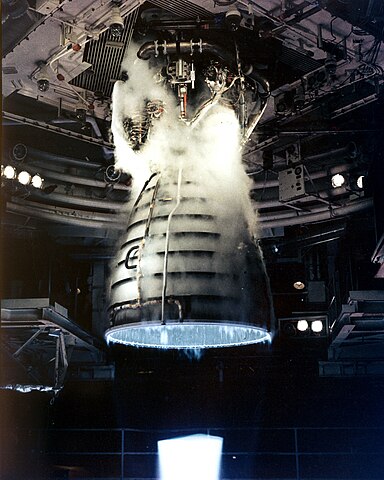
One of the first reusable liquid-fuel rocket engines of its size, each one has 415,000 lbs of thrust at sea level, and 513,000 lbs of thrust in a vacuum.
There are still 42 of these engines around. Worn-out nozzles were installed on the remaining Space Shuttles for display purposes. The engines are going to be disposed of through use in the upcoming Space Launch System.

One of the first reusable liquid-fuel rocket engines of its size, each one has 415,000 lbs of thrust at sea level, and 513,000 lbs of thrust in a vacuum.
There are still 42 of these engines around. Worn-out nozzles were installed on the remaining Space Shuttles for display purposes. The engines are going to be disposed of through use in the upcoming Space Launch System.
Last edited by Macsen on Tue Apr 21, 2015 8:30 am, edited 1 time in total.


Re: This day in Space History

67 years ago today, astronomer Gerard Kuiper discovered Miranda, one of the five major moons of Uranus.
Naturally, nothing would be known about Miranda until Voyager 2 encountered Uranus in January 1986. With the planet's bland features, it became the star of the encounter with its wild geographical features. Its most prominent feature, Verona Rupes (the sharp feature just right of center on the bottom of the moon in the above picture), is considered one of the highest cliffs in the Solar System.
At one point, it was believed its geography was the result of a previous moon being destroyed in a massive impact, and the moon re-coalescing and freezing into its current before it could restore a more normal geological makeup. Today, it is not believed a cataclysmic impact would account for its features. It is now believed that, at some point in its history, Miranda was at a resonance with one or more of the other major Uranian moons, resulting in tidal forces that could've heated the moon enough to make it geologically active for a time.
These would be exactly the kind of forces at play among the Galilean moons of Jupiter, giving Io its vulcanism and Europa its potentially biologically-viable subsurface liquid ocean.
Geological features on Miranda receive names from locations featured in Shakespearean plays. Craters in particular are named after characters from The Tempest, also the source for the name of the moon itself. All Uranian moon names are sourced from either William Shakespeare or Alexander Pope. The discoverer of two of the moons in 1851 (William Lassell, who discovered Ariel and Umbriel), took those names from Pope's play The Rape of Lock. The first two moons (Titania and Oberon, discovered by William Herschel in 1787) were named from A Midsummer Night's Dream.
Last edited by Macsen on Wed Feb 18, 2015 10:00 am, edited 1 time in total.


Re: This day in Space History

85 years ago today, astronomer Clyde Tombaugh discovered Pluto.
Astronomical calculations based on the motions of Uranus and Neptune suggested that a large body existed beyond both planets. A champion of the post-Neptune "Planet X" search was Percival Lowell, who founded his own observatory in Arizona in 1906. The search was arrested for over a decade after his death as his widow sued the observatory to confiscate its endowment in addition to her own inheritance.
After the legal issues were finally settled, the search resumed anew in 1929, and a young astronomer named Clyde Tombaugh was put in charge of the search. It took him less than a year to find Pluto, though prediscovery images were found from as early as 1909.
The planet was named after the Roman god of the underworld, with the name suggested by a schoolgirl in England. The idea was telegraphed to the Lowell Observatory by an astronomy professor at Oxford University. Its symbol happens to make up the initials of Percival Lowell.
Pluto quickly gained a foothold in popular culture, with the planet being the inspiration for the name of Mickey Mouse's dog, as well as the name of choice for the element plutonium.
However, it was clear from its discovery that Pluto couldn't possibly be big enough to be the Planet X everyone was looking for. This was even more obvious when its largest moon, Charon, was discovered in 1978. The discovery of other trans-Neptunian objects (particularly Eris, which was found to be larger than Pluto) led astronomers to conclude that there may be a need to re-define the idea of what a planet actually was.
In 2006, the International Astronomical Union decided that a planet should be defined as a large body in orbit around a star that is not a star itself, but has also largely cleared the neighborhood of its orbit. Pluto was demoted to a new classification called "dwarf planet", which was a smaller body that at least had enough mass to pull itself into a largely spherical shape (a state called hydrostatic equilibrium).
Pluto would share its new class with Eris, Ceres, Makemake and Haumea. But the classification is controversial, with several objects considered dwarf planets outside the IAU's official definition and classification. And of course, there's still a large contingent that continue to define Pluto as a planet in its own right.
(Vesta is not one of these; it is not at hydrostatic equilibrium.)
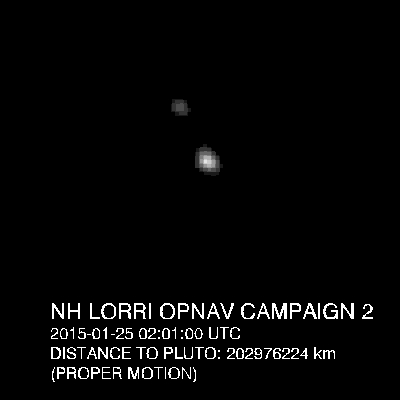
Pluto is the only classical-definition planet not to have been visited by a space probe yet. A plan to send Voyager 1 to Pluto as part of the Planetary Grand Tour was overridden in favor of a close fly-by of Saturn's moon, Titan.
Several plans to visit Pluto in the 1990s ultimately led to New Horizons, which was launched on January 19, 2006. It was the first probe to achieve a Solar System escape velocity from its launch away from Earth; the Pioneers and Voyagers achieved escape velocity after their respective fly-bys of Jupiter.
The probe will reach Pluto on July 14, 2015.


Re: This day in Space History
29 years ago today, the Soviet Union launched DOS-7, the core module of the Mir space station, into orbit atop a Proton rocket from Pad 200/39, Baikonur Cosmodrome.
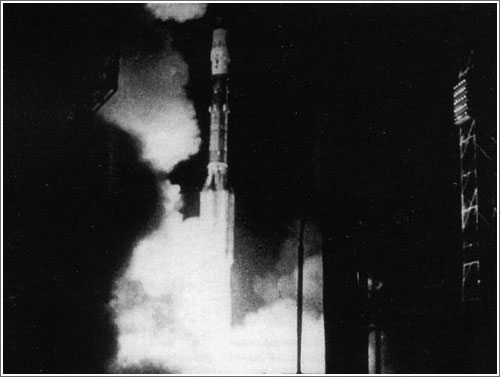

Mir would eventually be expanded with a piggyback module on the core, and four accessory modules oriented around a central all-axis docking adapter. At its peak, three spacecraft could dock with the station at a time, eventually to include the American Space Shuttle.
The first expedition to Mir, EO-1, would launch three weeks later.

Mir would eventually be expanded with a piggyback module on the core, and four accessory modules oriented around a central all-axis docking adapter. At its peak, three spacecraft could dock with the station at a time, eventually to include the American Space Shuttle.
The first expedition to Mir, EO-1, would launch three weeks later.


Re: This day in Space History

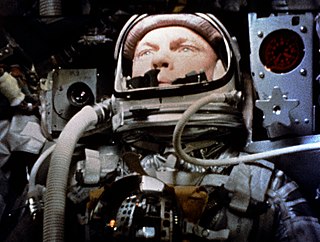
53 years ago today, NASA conducted its first orbital manned spaceflight with the launch of Mercury-Atlas 6 from Pad 14, Cape Canaveral. The Mercury capsule was given the codename Friendship 7, and carried astronaut John Glenn.
The capsule was placed in an initial orbit of about 150 x 90 miles. Glenn failed to observe some phenomena that were expected (he failed to notice "zodiacal light" because the nights were too short for his eyes to adapt), but notice "fireflies" around the spacecraft, which were eventually deduced to be crystallized exhausts from the spacecraft.
A sensor error on the capsule, "Segment 51", concerned the ground crew that the landing bag may try to deploy if the retropack were jettisoned nominally. They ultimately decided to attempt re-entry without jettison. The retropack eventually burned off, but the heat shield and landing bag remained in place during re-entry, though it had to be deployed manually after the parachutes deployed.
Friendship 7 splashed down in the North Atlantic, about 160 miles north of the Dominican Republic, and was recovered by the destroyer USS Noa. Today, the capsule is on display in the National Air and Space Museum.


Re: This day in Space History
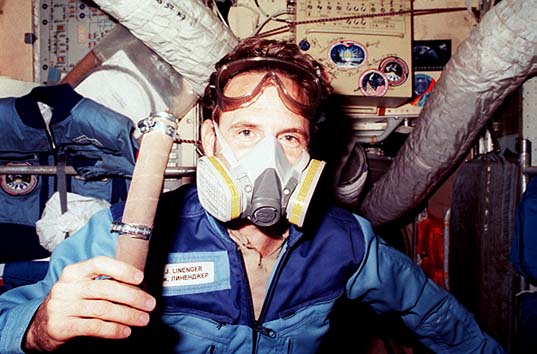
1997 was shaping up to be a very bad year for space station Mir.
18 years ago today, Mir suffered an electrical fire.
The fire was sourced to a backup unit of the Vika oxygen generator. Vika replaces oxygen lost during docking maneuvers and spacewalks through the burning of lithium perchlorate canisters, one of which can produce enough oxygen for one person for 24 hours. It is a supplemental oxygen generator to backup the Elektron system, which recycles oxygen from carbon dioxide.
How long the fire burned is up to debate (estimates anywhere from 90 seconds to 15 minutes), but smoke lingered for about 45 minutes after it was put out. The cosmonauts and visiting astronaut Jerry Linenger were forced to don gas masks, and discovered that some of the fire extinguishers in the newer modules could not be removed from their stowage.
The fire was described as a "raging blowtorch", and blocked the crew's possible escape route to one of the Soyuz capsules docked at the time (it occurred during a Russian crew rotation). The unit was destroyed, and had to be replaced by another backup unit later on. Damage beyond the unit, however, was minor, and limited largely to wiring.
As the Vika was to be used on the International Space Station, American and Russian scientists worked to improve the system's safety for ISS use.
(I'm not certain, as descriptions of the photo above don't say, but I think Jerry Linenger is seen holding one of the lithium perchlorate canisters.)


Re: This day in Space History
55 years ago today, the Soviet Air Force named their first class of 20 pilots who would be trained as cosmonauts. The candidates included Yury (the board censors his real name) Gagarin, Gherman Titov, Alexei Leonov, Vladimir Komarov, Andrian Nikolayev, and Boris Volynov.
12 of the 20 candidates would ultimately fly in space. One would die in training, three were kicked out for disciplinary issues, and four bowed out due to injury.
12 of the 20 candidates would ultimately fly in space. One would die in training, three were kicked out for disciplinary issues, and four bowed out due to injury.


Re: This day in Space History

49 years ago today, the first Saturn IB rocket was launched from Pad 34, Cape Kennedy. It carried a full Block I Apollo Command and Service Module (CSM), its second launch. (The first CSM was on a Little Joe 2 sounding rocket for an escape tower test firing.)
The launch was suborbital in nature. It reached an apogee of 492 km, and travelled a total of 8,477 km downrange. The S-IVB stage was given a re-firing test, allowing it to accelerate the CSM to a speed of 29,000 km/h for a re-entry test. The service module engine was also tested, but failed due to an oxidizer line leak that permitted helium pressurant into the combustion chamber. There was also faulty wiring in the command module.
The command module splashed down in the South Atlantic, about 650 km NNW of St. Helena, which was 72 km short of its target. It was recovered by the carrier USS Boxer. It was later used for drop tests at White Sands Missile Range. It is currently on display at the Strategic Air and Space Museum in Ashland, Nebraska.


Re: This day in Space History
47 years ago today, the Soviet Union launched Zond 4, their fifth attempt at an unmanned lunar flight dress rehearsal.
"Zond" was the name given to the Soyuz 7K-L1, a spacecraft that lacked the orbital module in order to save weight. In addition, the early Proton rocket was barely powerful enough to send the spacecraft on a cislunar "free return" trajectory, where it simply looped around the back of the Moon and came right back. The spacecraft did not have enough power to return had it attempted to enter lunar orbit.
They attempted an aerodynamic "skip return" trajectory, but the guidance system failed, sending it on a ballistic entry that would see it land in the Atlantic. Not wanting it to fall into American hands, ground control ordered it to self-destruct over the Gulf of Guinea, about 100 miles off the coast of Africa.
Its official fate initially was that it ended up in heliocentric orbit.
"Zond" was the name given to the Soyuz 7K-L1, a spacecraft that lacked the orbital module in order to save weight. In addition, the early Proton rocket was barely powerful enough to send the spacecraft on a cislunar "free return" trajectory, where it simply looped around the back of the Moon and came right back. The spacecraft did not have enough power to return had it attempted to enter lunar orbit.
They attempted an aerodynamic "skip return" trajectory, but the guidance system failed, sending it on a ballistic entry that would see it land in the Atlantic. Not wanting it to fall into American hands, ground control ordered it to self-destruct over the Gulf of Guinea, about 100 miles off the coast of Africa.
Its official fate initially was that it ended up in heliocentric orbit.


Re: This day in Space History
Today is the beginning of a particularly exciting week in 1986: the Halley Armada. Five spacecraft from the European Space Agency (ESA), the Soviet Union, France and Japan would explore Halley's Comet during this week, marking the first up-close measurements of a comet.
It started 29 years ago today when Vega 1, a bus probe that was a joint-effort between France's independent space agency (CNES) and the Soviet Union, approached within 8,890 km of the nucleus. Several months before, it had dropped a lander and balloon set on Venus.
The measurements made by Vega 1 would be used by the ultimate probe, ESA's Giotto, to penetrate the coma and encounter the nucleus itself.
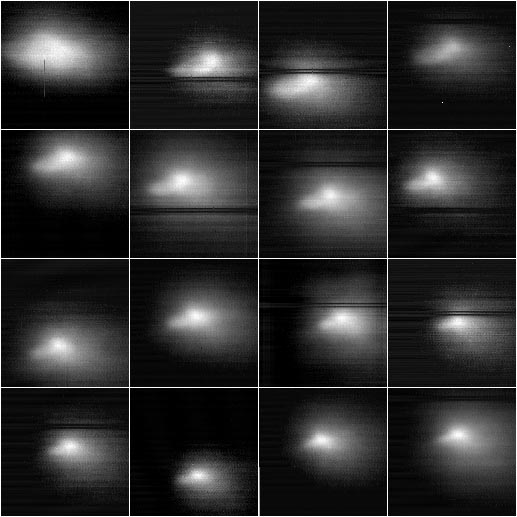
Unfortunately, the Soviet Union used straight TV cameras to image the comet. So the pictures themselves weren't that great.
It started 29 years ago today when Vega 1, a bus probe that was a joint-effort between France's independent space agency (CNES) and the Soviet Union, approached within 8,890 km of the nucleus. Several months before, it had dropped a lander and balloon set on Venus.
The measurements made by Vega 1 would be used by the ultimate probe, ESA's Giotto, to penetrate the coma and encounter the nucleus itself.

Unfortunately, the Soviet Union used straight TV cameras to image the comet. So the pictures themselves weren't that great.


Re: This day in Space History
29 years ago today, the Halley Armada mission continued with the closest approach of Japan's Suisei probe.
Suisei did not have a video camera. Its primary purpose was to take ultraviolet measurements of the coma. Its closest approach was 151,000 km.
Known as "PLANET-A" before its launch, it was launched by the solid Mu-3SII-2 rocket in September 1985. Although Japan hoped to get a few more comet encounters out of it in the 1990s, it ran out of fuel before they could complete maneuvers.
Suisei did not have a video camera. Its primary purpose was to take ultraviolet measurements of the coma. Its closest approach was 151,000 km.
Known as "PLANET-A" before its launch, it was launched by the solid Mu-3SII-2 rocket in September 1985. Although Japan hoped to get a few more comet encounters out of it in the 1990s, it ran out of fuel before they could complete maneuvers.


Re: This day in Space History
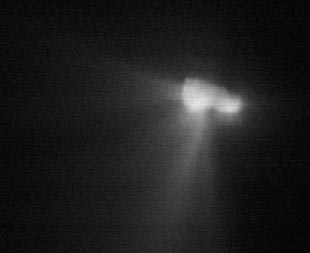
29 years ago today, the Soviet-French Vega 2 probe flew by Halley's Comet at a distance of 8,030 km. With better images, they were able to better make out the shape of the comet's nucleus. Both Vega bus probes were shut down a few weeks after their encounters.
The stage was set for Giotto.


Re: This day in Space History

55 years ago today, NASA launched Pioneer 5 on a Thor-Able rocket from Pad 17A, Cape Canaveral.
The most ambitious satellite of the early Pioneer program, it was launched into heliocentric orbit for the purpose of testing interplanetary communications. They were able to discern data from about 10 million miles, and merely detect its signal from 22 million miles.
The path of the probe simulated a trajectory to Venus, but the probe itself was not designed to go there, nor was it launched at an appropriate window to make it there.


- Radio Blue Heart
- Posts: 2642
- Joined: Mon Feb 06, 2012 10:27 pm
- Location: North Carolina
Re: This day in Space History
I forgot to mention. March 9th was the birthday of Col. Yuri Alekseyevich Gagarin, the first human in space.
"I have known hardship and learned to aid the wretched."
-Virgil
-Virgil